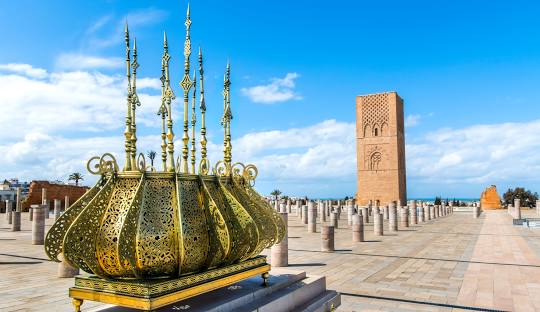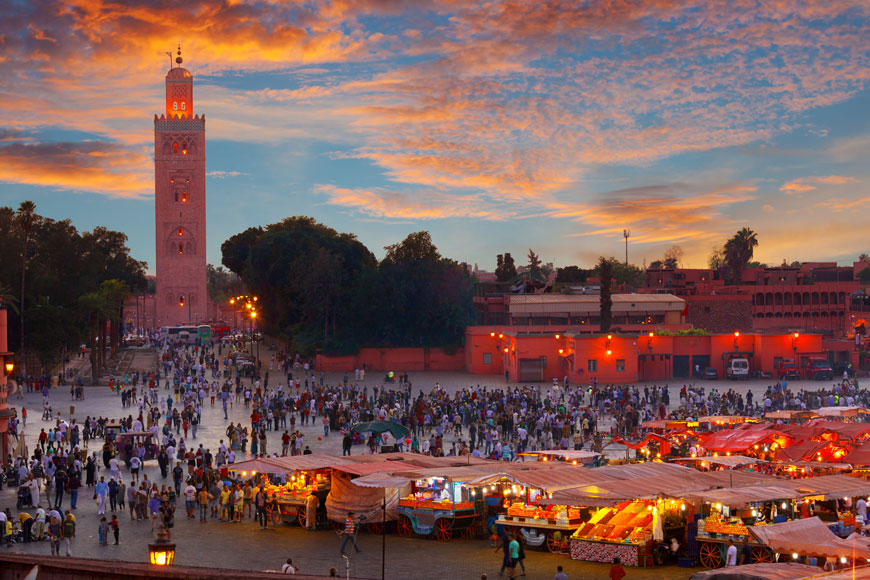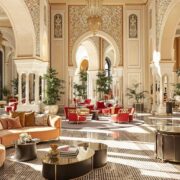
The Beauty and Richness of Moroccan Architecture
Moroccan architecture is a striking blend of various cultural influences, including Arab, Berber, and Andalusian styles. This unique fusion has resulted in some of the most awe-inspiring structures in the world, characterized by intricate design, attention to detail, and a deep connection to both the natural environment and the country’s rich history. From grand palaces and mosques to the serene courtyards of traditional Riads, Moroccan architecture reflects the soul of the nation.
At MoroccoWow, we invite you to explore the fascinating elements of Moroccan architecture and uncover how it embodies both beauty and functionality.
1. The Influence of Islam, Berber, and Andalusian Cultures
Moroccan architecture is a testament to the diverse cultures that have shaped the country over centuries. The Islamic influence brought with it intricate geometric patterns, minarets, and expansive courtyards, while the Berbers, Morocco’s indigenous people, contributed a unique vernacular style using local materials and a connection to the natural world. The Andalusian influence, brought by Moors fleeing Spain, added graceful arches, gardens, and sophisticated water features to Moroccan design.
The result is a harmonious blend of styles that caters to both aesthetic beauty and functionality. The use of arches, courtyards, decorative tiling, and fountains in Moroccan buildings is not only a stylistic choice but also serves practical purposes, such as promoting ventilation, cooling, and privacy.
2. Key Features of Moroccan Architecture
Arches and Doorways
One of the most iconic features of Moroccan architecture is the arch. Arches can be found everywhere, from the entrance doors of Riads to the doorways of mosques and palaces. They are a significant element in Islamic architecture, serving both decorative and structural purposes. The use of horseshoe arches, particularly in the Andalusian style, is a hallmark of Moroccan design, providing a sense of elegance and symmetry.
Riads: The Heart of Moroccan Homes
A Riad is a traditional Moroccan house built around an interior courtyard, often featuring lush gardens, a central fountain, and open spaces designed to create a sense of serenity. The design of the Riad is centered on privacy and cooling, with rooms arranged around the courtyard to block out the heat and noise of the outside world.
Riads were historically the homes of wealthy families, and their architecture reflects a refined sense of luxury, featuring stunning tilework (zellige), plaster carvings, and intricate woodwork. Today, many Riads have been transformed into boutique hotels and offer visitors a chance to experience the authentic beauty of Moroccan architecture.
Mosaic Tiles: Zellige
One of the most recognizable elements of Moroccan design is zellige, the vibrant, hand-cut ceramic tiles that are used to decorate everything from walls and floors to fountains and columns. Zellige tiles are usually arranged in intricate geometric patterns, often in rich colors like turquoise, green, yellow, and red. This mosaic tilework is not only visually striking but also symbolizes the connection between spirituality and craftsmanship, with each piece forming part of a larger, harmonious whole.
The art of creating zellige tiles has been passed down through generations, and today it remains a revered craft in Morocco, with artisans continuing to produce stunning works of art.
Stucco and Plasterwork
The use of tadelakt, a smooth, polished plaster, is another distinctive feature of Moroccan architecture. Tadelakt is often applied to the walls of Riads and other structures, creating an elegant and shiny surface. It’s commonly used in bathrooms, hammams (traditional Moroccan baths), and public spaces. The application of tadelakt requires great skill, as the technique involves polishing the surface with a stone to achieve a smooth and glossy finish.
In addition to tadelakt, decorative plasterwork is often found on walls, ceilings, and arches. These intricate stucco carvings are often floral or geometric in design and can be seen in historic mosques, palaces, and Riads.
Woodwork: Traditional and Intricate
Wooden elements are an essential part of Moroccan design, with intricate carvings adorning everything from doors and windows to ceilings and furniture. The use of cedar and other local woods is common, and the craftsmanship involved in creating these wooden details reflects Morocco’s deep appreciation for artistry.
One of the most striking examples of Moroccan woodwork is found in the mashrabiya, a type of wooden latticework used in windows and screens. The delicate patterns created by mashrabiya not only add beauty to a space but also provide privacy while allowing light and air to flow freely.
Courtyards and Water Features
In Moroccan architecture, courtyards are central to the design of both residential and public buildings. The courtyard, often adorned with plants, fountains, and pools, serves as an oasis in the midst of the city’s heat, providing a cool and tranquil space for relaxation. Water is a recurring element in Moroccan architecture, with fountains and pools symbolizing purification and serenity.
The design of the courtyard also focuses on privacy, with rooms surrounding the open space, allowing the inhabitants to enjoy the outdoors without sacrificing seclusion.
3. The Influence of the Desert: Clay and Earth Materials
Moroccan architecture is deeply influenced by the country’s natural surroundings, especially the desert. In rural areas, traditional homes known as kasbahs are often built from mud bricks or clay, materials that offer natural insulation from the desert heat. The thick, earthy walls of these structures provide cool interiors during the day and warmth at night.
In addition to the use of mud, many buildings in Morocco feature roofs made from palm fronds and other locally sourced materials, making them sustainable and adapted to the environment. This connection between architecture and the natural world reflects Morocco’s ability to work in harmony with its surroundings.
4. Moroccan Palaces and Mosques: Grandeur and Spirituality
Moroccan palaces and mosques are monumental examples of the country’s architectural brilliance. The palaces, often the residences of royalty or wealthy families, are designed to evoke a sense of grandeur and opulence. They typically feature expansive courtyards, intricate tilework, and beautiful gardens, as well as luxurious interiors.
Similarly, Moroccan mosques are characterized by their large courtyards, majestic minarets, and stunning prayer halls. The Al-Qarawiyyin Mosque in Fes, one of the oldest universities in the world, is a prime example of Islamic architecture, with its elegant arches, courtyards, and ornate carvings.
5. Modern Influences in Moroccan Architecture
While traditional Moroccan architecture remains central to the country’s identity, modern influences can also be seen in contemporary buildings. In cities like Casablanca and Rabat, sleek, modern structures are being built alongside historic ones, creating an exciting blend of old and new. However, even in these modern designs, the principles of Moroccan architecture—such as the use of light, space, and natural materials—are often maintained.
Conclusion
Moroccan architecture is a visual feast for the eyes, filled with intricacies and details that tell the story of a nation rich in culture, history, and craftsmanship. Whether you’re exploring the labyrinthine streets of the medina, staying in a luxurious Riad, or admiring the grandeur of a mosque or palace, Morocco’s architecture is a key part of its charm and allure. At MoroccoWow, we encourage you to immerse yourself in the beauty of Moroccan design, where every building, courtyard, and mosaic tells a unique and timeless story.
Recent Posts
Empowering Adventures: A Solo Female Travel Guide to Morocco in 2025
Affordable Ways to Fly to Marrakech from Manchester: Your Ultimate Guide
Experience Luxury at the Hotel Sofitel Lounge and Spa Marrakech: A Gateway to Relaxation and Elegance

Marrakech

Chefchaouen




